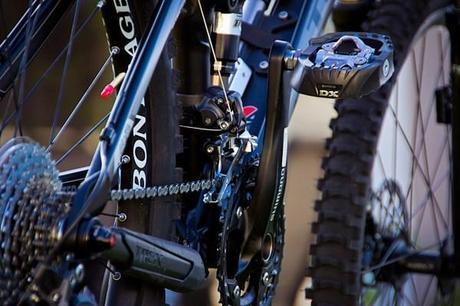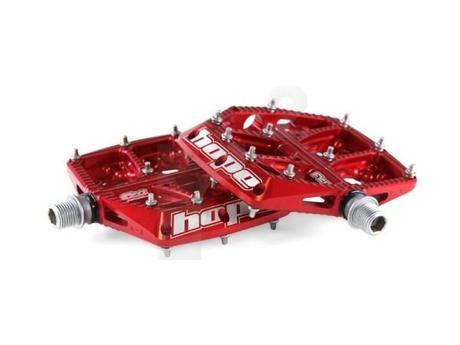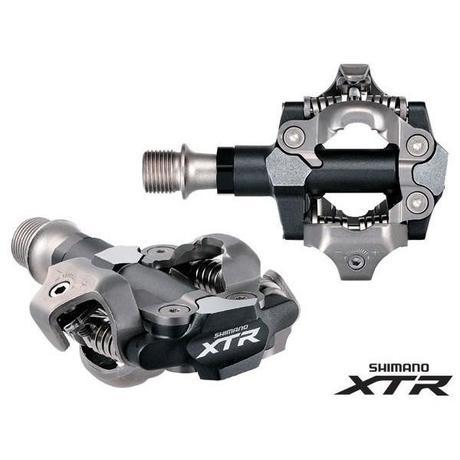 Few outdoor activities can match the sense of freedom and exhilaration that mountain biking delivers. Whether you like to stick to established tracks or explore the deeper parts of the countryside, mountain biking is a great way to stay in shape whilst taking in the best that mother nature has to offer.
Few outdoor activities can match the sense of freedom and exhilaration that mountain biking delivers. Whether you like to stick to established tracks or explore the deeper parts of the countryside, mountain biking is a great way to stay in shape whilst taking in the best that mother nature has to offer.
However, there is a major decision you will need to make that will affect the comfort of your ride profoundly: should you use flat or clipless pedals? Ultimately, the answer is whatever you feel more comfortable with, but there are several pros and cons to consider before you reach your decision.
Considering your Options
The type of pedal you fit to your bike will probably depend on both the type of ride you want and the terrain. The best way to draw your own conclusions is to test both types, whilst considering a few important factors:
- Do you want the option of putting your feet on the ground for stability quickly?
- Are you worried about your feet slipping off the pedals?
- Which type best complements your riding technique?
- Are you taking on particularly challenging terrains?
Flat Pedals

A flat pedal, often referred to as a platform, is the standard design that most people will be familiar with. They come with various levels of traction, but they don’t lock the foot into place. The only true control you will have when using this kind of pedal is when you are pushing downwards on it.
Riding a mountain bike with flats means there is nothing keeping your foot attached to it, which may be beneficial if you want to make lots of stops safely, without worrying about falling over because of your inability to disengage your foot. If you are a beginner, nervous about falling off your bike or you’re planning to make several stops on your ride, then this design may be for you.
That said there is a downside to opting for flat pedals. If you require lots of momentum to get you through tricky parts of a journey, using a flat model can prove to be somewhat inefficient. Because you are only powering the bike when your foot is pushing downwards, you aren’t providing power for half the time you are cycling. If you are mountain biking in snowy or particularly wet conditions, your foot is likely to slip at times.
Pros of flat pedals
- If you get into trouble, you can free your feet immediately to steady yourself
- You can adjust the position of your feet according to the challenges of the terrain
- There is no need for ‘clipping in’ before you set off
- You can vastly improve your riding technique
Cons of flat pedals
- Your feet are susceptible to slipping off pedals in wet conditions
- There is an increased risk of scrapes and grazes to your shins
Clipless Pedals

Experienced riders often prefer the increased power that clipless pedals deliver, as extra momentum can be created to overcome steep inclines and a range of challenging environments.
But there is a downside to improved efficiency. Beginners or those used to flat pedals will need to master the potentially tricky process of getting their feet in and out of clipless pedals quickly and safely.
This type of pedal requires you to attach the cleats of your shoes into the clips, so freeing your feet before you topple over is something you will need to practice. You will also need to invest in a pair of compatible riding shoes.
Pros of clipless pedals
- The feeling of being attached to the bike often means a smoother peddling action
- Delivers increased momentum for challenging courses
- Lifting your wheels over obstacles such as fallen tree branches is easier
- You can avoid the hazard of your feet slipping off the pedals
Cons of clipless pedals
- Freeing your feet in a hurry can be tricky
- You are susceptible to a sideways fall because your feet are clipped into place
The best way to decide which type is best for you is through a process of trial and error. However, you may discover that you want both types available to you for different mountain biking challenges. By choosing the pedals that best suit your riding priorities, you can ensure that your rides are always both enjoyable and rewarding.
All images courtesy of Merlin Cycles.
About The Author
This article was written on behalf of Merlin Cycles, one of the UK’s longest established online bike shops and mail order cycling specialists in operation today.
